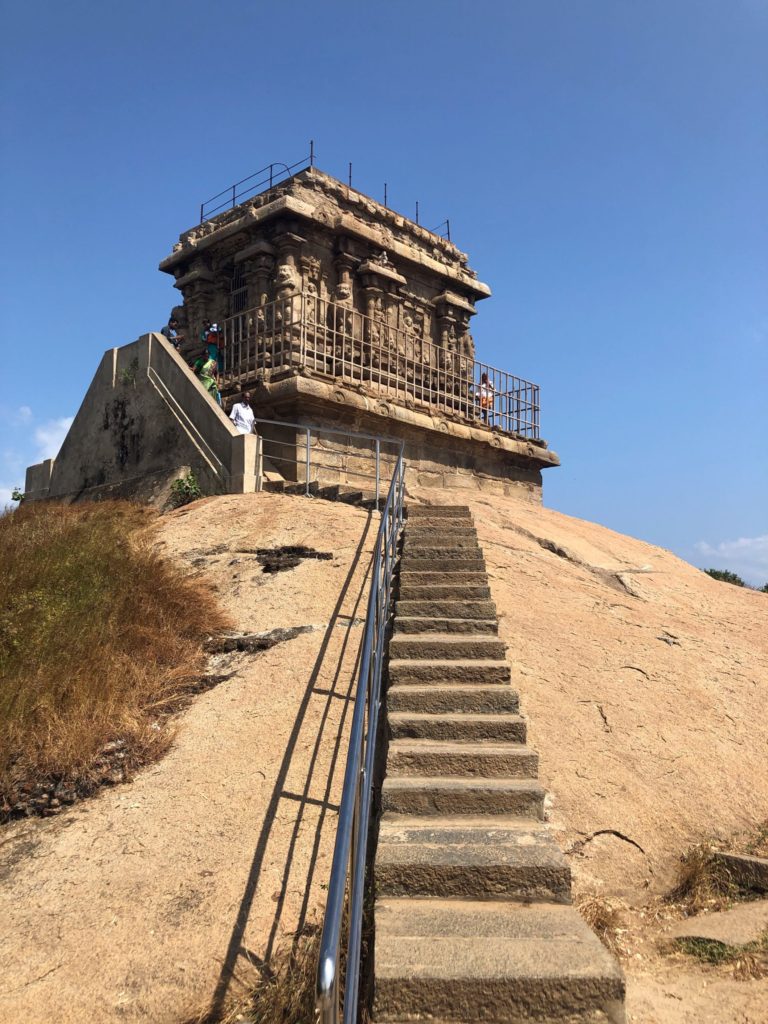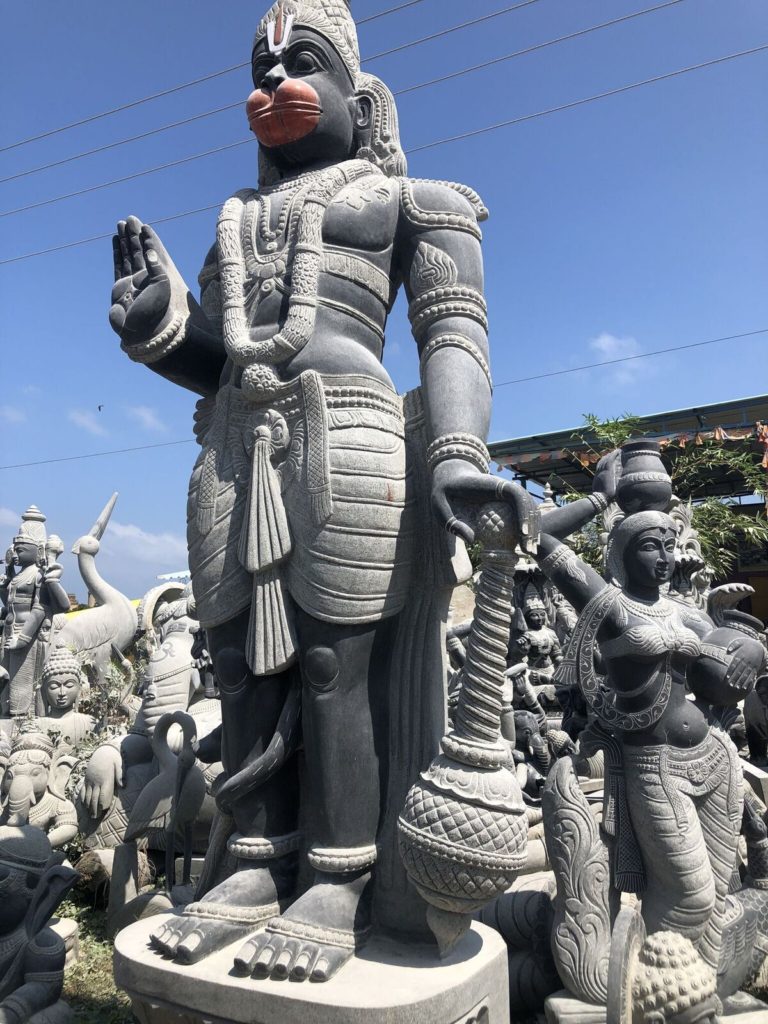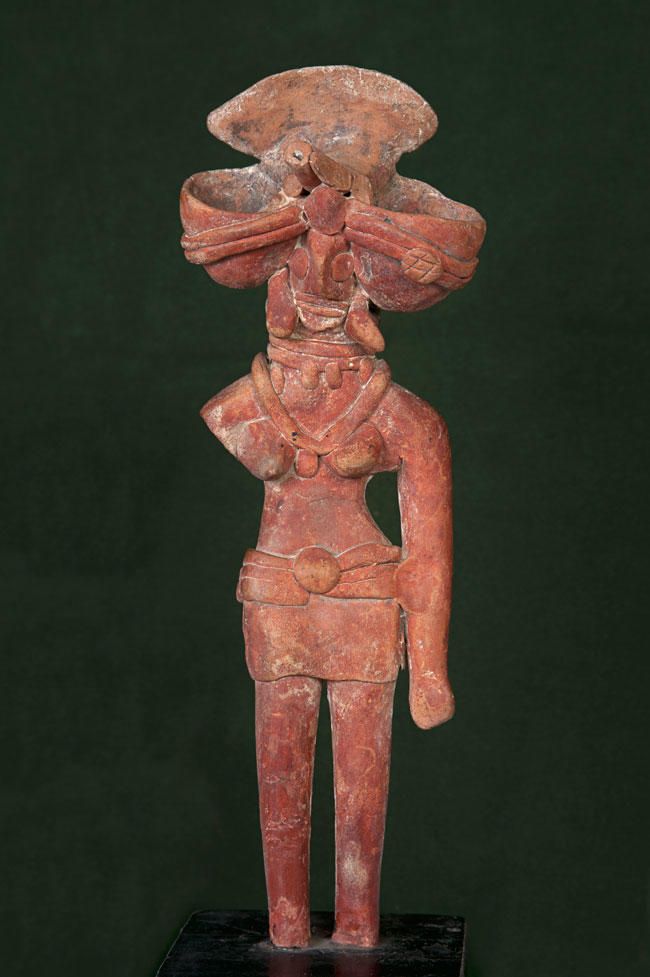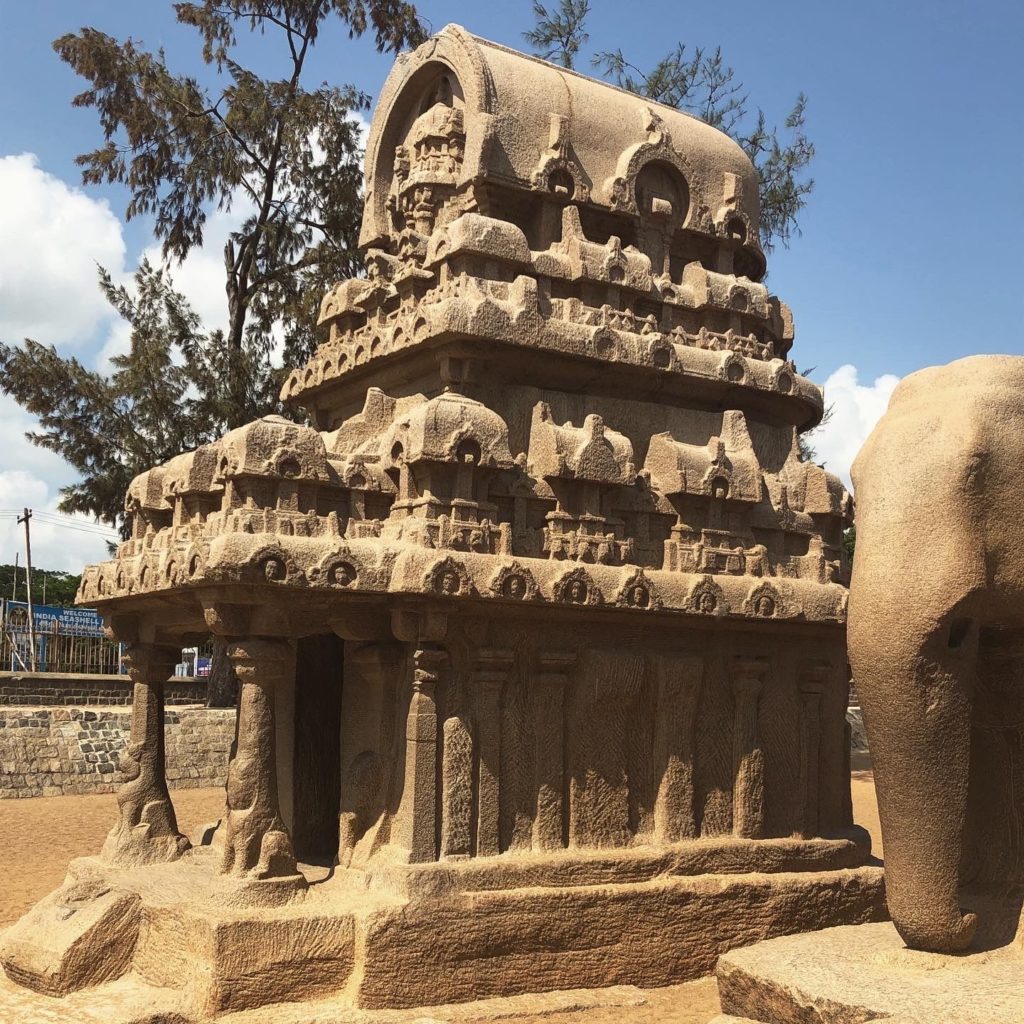By Harsh Shah Gowani

Weaving through the busy streets of Mahabalipuram, a temple town in South India, our path was flanked by sculptors engrossed in carving and detailing ornate deity-sculptures out of raw black granite pieces. All along the stretch of the thoroughfare to the rock-cut temples, we observed a closely-knit network of sculpture shops whose businesses, one could say, inextricably thrived on the faith of the temple-visitors. A mental juxtaposition of every stroke of hammer and chiseler that brought to life these sculptures, with strokes that conceived the temples themselves wafted to my mind a nuanced trajectory of Indian temple art and building activity from 2500BC to 7th century AD, when these temples were built.
The first phase of urbanization in the Indian subcontinent occurred in c.2500BC, when the great cities of the Indus civilization flourished. The cities exhibited a sophisticated sense of urban planning; to the west were buildings of civic and social importance and to the east were residential buildings. The civic buildings consisted of collegiate buildings, warehouses, granaries and so on. Interestingly, there was a conspicuous absence of elaborate temples or of any specially demarcated places for religious worship as there were of any detailed and ornate icons of worship. Although metal and stone sculptures were found in some locations, they did not indicate the existence of any temple icons. Terracotta headless-female figurines were found in some locations and while they may have been looked upon as icons of worship, the cities in themselves had no apparent religious buildings.

The coming of Indo-Aryan speaking people from East Iran in c.2000BC brought to the land the ‘Vedic’ religion. Intrinsic to the Vedic religion was the practice of yajna i.e. sacrificial ritual and, as evidently described in the Vedic corpus, it was done to worship abstract forms of divinity. Soon as the religion spread in the sub-continent, it came to be considered as the central ritual and, both small-scale and large-scale sacrificial rites were performed prodigiously. The performance of these rites did not demand specially demarcated religious sites or temples; the rite itself was ephemeral in nature, could be performed anywhere with prior preparations and would last just for a few hours or days.
As time progressed, a myriad of societies with multiple origins emerged in the sub-continent giving rise to multiple kinds of culture and schools of thoughts –some overlapping and others contradicting each other. Of such cultures, it was Buddhism and Jainism which rose to prominence in the 6th century BC and with which the succor of patronage, transitioned and formalized into religions.
Buddhism soon became a proselytizing religion in the sub-continent. It also began to expand to the West, Central Asia and China as an ally to trade and commerce. Through interactions with variegated cultures across the sub-continent and through the patronage it received from the rich mercantile community, there began artistic and aesthetic experiments in temple-related art and architecture in India. The Buddhist rock-cut cave monasteries and freestanding ‘stupas’ were born out of such experiments. The monasteries consisted of a clear zoning of spaces and activities unlike the temporary sites of yajna. As most of these monasteries were built along the trade route, they tended to act as nodal points for the congregation of traders and merchants. Some of them also acted as formal education centers. Portraiture and sculpture developed as an appendage to architecture, and noticeably it was around this time that images came to be perceived as a part of worship. While yajnas did not provide much scope for visual experimentation, it was through the advent of Buddhism that much of the aesthetic experimentation in regards to temple art and architecture were born in India.

A system was laid out where permanent and recognizable spaces came to be built for worshipping and learning through patronage of kings and mercantile communities, and by using workmanship of artisans and craftsmen who fused foreign styles with indigenous ones. This system was also later adopted by ‘Vaishnaviites’ (worshippers of Vishnu), ‘Shaivites’ (worshippers of Shiva), and various other sects that engendered from the Vedic religion during the first few centuries AD.
The change in polity starting the 4th century AD marked a rise in temple building activity in North India. Granting of lands and villages to religious institutions who were to act as catalysts in facilitating and boosting agriculture saw plenty of temples springing up in various towns and cities. Temples were strategically built either at nodal points of trade or in administrative centers, as they were earlier in case of Buddhist rock-cut temples. The location enabled them to attract endowments from wealthy merchants and guilds. The grants also came from members of the royal family. Temples built through royal donations also fulfilled the role of associating divinity with kingship –a phenomenon that had historically continued from the time of the Vedic religion and was brought to fruition by priests performing elaborate sacrificial rites. The day-to-day life of the deity housed in the temple was often made to mimic the day-to-day life of the king, inextricably linking the deity with the king.
Temples could also tap into resources of the villages donated to them for their upkeep and maintenance. In turn, they provided education, facilitated agriculture and many times assumed judicial and financial duties. As religious institutions became keen buyers and donees of land, their growth also spurred the economy. This trend soon spread out to South India especially around the 5th century AD when foundations of robust political and social institutions were beginning to be laid in the peninsula. Various literary and intellectual movements such as the Devotional ‘Bhakti Movement’ further augmented the surge in temple building activity. As temples began encapsulating a sense of power, their architecture and ornamentation became more complex and elaborate in nature, marking a departure from austerity of earlier rock-cut monuments. Manuals were composed on construction of temples as an attempt to formalize the basic planning. The North, the Deccan and the South developed their own styles of temple-building art and architecture. The period between 7th and 12th century AD saw a gradual surge in temple-building activity and an extensive concomitant development of artistic techniques employed in making them.

From the first visible rudimentary forms of early temples in the last few centuries BC to the ornate and ostentatious temples of the later period, one can very well observe a gradual mutation in social and political trends that led to the growing importance of temples. They grew in size considerably, maintaining a hierarchy of employees consisting of priests, treasurers, accountants, musicians, carpenters, masons, stonecutters and sculptors. The temples both directly and indirectly supported their incomes.
The town of Mahabalipuram too had been developed as a center for art and commerce during the reign of the ‘Pallava’ kingdom starting 6th century AD. It had also flourished as an important port-town in trade between Tamil Nadu and South-East Asia and China. One can also see a striking similarity between rock-hewn granite-temples of the town and earlier Buddhist cave shrines indicating that experimentation with art and sculpture were still being done in South India. The temples may have been used for ceremonies of royal legitimation serving as symbols of power, and may have most definitely invested in commerce, the signs of which are yet so vividly seen in the abundance of hereditary-run sculpture-shops of the town.
Thus, with each stroke of hammer that these sculptors strike, a story of the evolution of Indian temples begins to chart in my mind –from conception to inception.
Harsh Shah Gowani is a practising architect and a visiting lecturer at NMIMS’ Balwant Sheth School of Architecture in Mumbai. He takes an avid interest in reading history and relating it back to architecture.


An articulate description as always! Very well narrated….
Very well written Harsh! You are the blessed ,multitalented boy! Stay enthusiast always. God bless